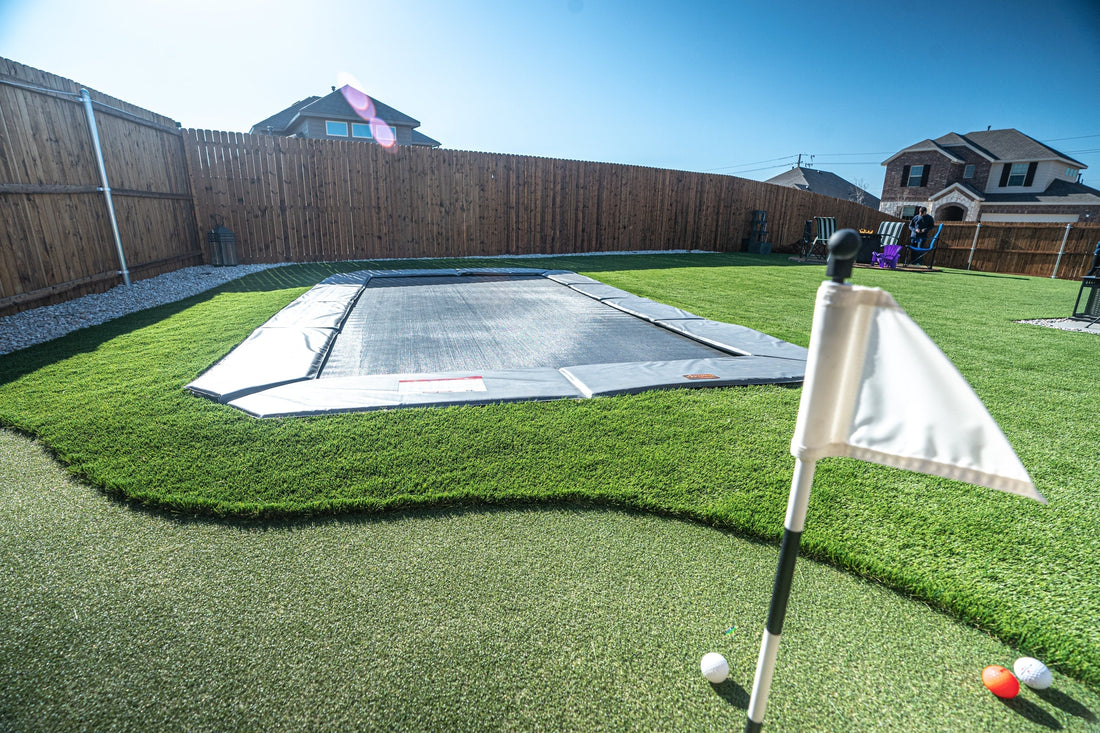If you're a homeowner or a parent in Long Island, and you’ve had your eyes on turning your backyard into an oasis with an inground trampoline, you're no doubt excited at the prospect. But before you take another step, it's crucial to realize the legal complexities and regulations you might encounter. This guide will arm you with the knowledge necessary to navigate the legal landscape when installing inground trampolines in your area.
Local Regulations
Like many residential communities, LI has enacted specific regulations pertaining to the installation of residential inground trampolines. These regulations not only ensure that properties are maintained safely and cohesively within the community but also protect citizens from potential hazards.
Overview of Specific Regulations and Codes
The first step on your trampoline installation journey is to research and understand the local laws that govern such activities. For local residents, this might involve visiting your town hall, checking the municipal website, or consulting with a legal professional well-versed in local codes. You may encounter regulations regarding property line setbacks, maximum height allowances, and other specifications.
Permits and Approvals Required
In some cases, the installation of an inground trampoline can require a permit. The permit process is designed to ensure that the work is done to industry standards and is inspected for safety upon completion. Failure to obtain the necessary permits can result in costly fines and may require you to remove the trampoline.
Safety Considerations
Safety Requirements for Trampoline Installations
Local regulations may also stipulate certain safety features for your trampoline, such as impact-absorbing surfaces, cushioned edge covers, and secure anchoring systems. It's essential to not only meet these requirements for legal reasons but also to protect those who will be using the trampoline.
Fencing and Enclosure Guidelines
Safety enclosures are an integral part of a responsible trampoline setup, and certain municipalities may require specific heights or types of enclosures to prevent unauthorized access by children or animals. An improper or absent enclosure could lead to legal and financial consequences if an injury occurs.
Maintenance and Inspection
Even if no specific local regulations exist regarding maintenance and inspection, these aspects are critical for ensuring the ongoing safety of your trampoline. Regular checks for wear and tear, proper drainage, and other maintenance concerns should be part of your routine.
Liability and Insurance
Understanding Liability Issues
When you install an inground trampoline, you are taking on a level of liability that extends beyond your property line. In the case of an injury, you could be held legally responsible if it is determined that your negligence contributed to the incident.
Importance of Proper Insurance Coverage
To mitigate this risk, it's important to speak with your homeowner's insurance provider about what coverage is available and necessary for your inground trampoline. Some insurance companies may require additional liability coverage or have specific underwriting guidelines for homes with trampolines.
Case Studies
Reviewing past incidents and legal cases involving trampolines can offer valuable insights into how local regulations and insurance coverage affect actual outcomes. By learning from others’ experiences, you can better protect yourself and your family.
Real-life Examples of Legal Issues Related to Inground Trampolines
Case studies could include instances where proper safety protocols prevented injuries and cases where the absence or negligence of these measures led to legal disputes. Each case can serve as a lesson for both the homeowner and the public on best practices and legal expectations.
The excitement of installing an inground trampoline should not overshadow the legal responsibilities that come with it. Remember, your goal is not just installing a bounce-savvy feature but also creating a safe and compliant addition to your home.
Safety must always be paramount, and following the stringent guidelines set by local trampoline regulations will not only keep you on the right side of the law but also ensure that you are being a responsible member of your community.
Installation of an inground trampoline should not become a legal minefield if you approach the process with care and consideration. Navigate the path sensibly, prioritize safety and legality, and you'll be well on your way to enjoying your trampoline with peace of mind. If you want to leave it to the professionals instead of DIYing, TrampolinesInGround.com can help. We also offer a variety of in-ground trampoline kits that you can buy for self installation. We would love to be a part of your trampoline journey, reach out today.

